The Gardiner-Doing Camp in the Adirondacks
Summer camps for children in the Adirondack Mountains of Upstate New York have been a fixture now for over a century, but perhaps none quite so extraordinary, controversial, and unique as the Gardiner-Doing Camp, founded by its two female proprietors, Gail Gardiner and Ruth Doing.
It began in the early 1920s, shortly after World War I, when Ruth Doing—a former dancer and disciple of the legendary Isadora Duncan—joined forces with her business partner and life partner, Gail Gardiner, to establish a camp for young girls and boys, emphasizing the arts and progressive education.
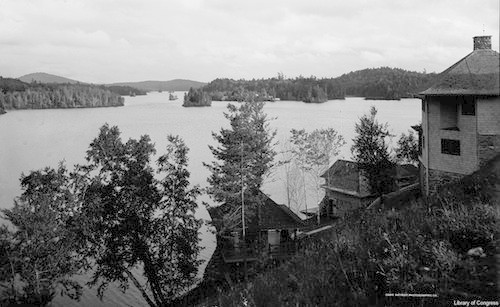
Upper St. Regis Lake, NY. 1906.
Nestled against the tranquil mountains of Upper St. Regis Lake, and surrounded by the affluent, private residential camps of New York’s elite society, the Gardiner-Doing Camp thrived for decades as an oasis of creative expression. Based on the teachings of Isadora, who had established her school for young girls just outside of Paris, Ruth and Gail set out to continue the cause, particularly where dance was concerned.
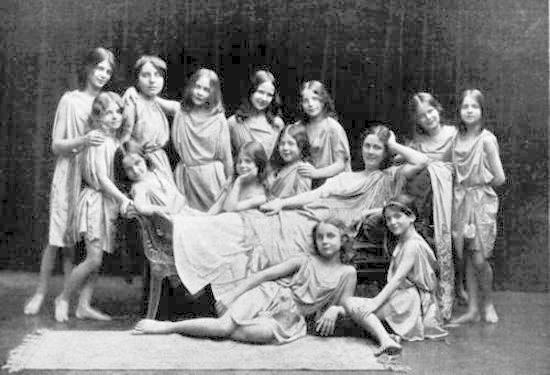
Isadora Duncan, surrounded by her young students.
Andrea King’s own mother, Belle McKee, was also a disciple of Isadora Duncan, having danced with her in New York and Paris. Belle knew Ruth Doing from those earlier rewarding days, and she joined in at the camp as a dance instructor every summer for many years. They would teach Isadora’s method of rhythmic exercise, or “rhythms” or “eurythmics,” as they were often called back then.
Andrea, known then as Georgette, would attend the camp each summer. She loved every minute of it, and when her younger sister Anne McKee was old enough, she too attended the camp.
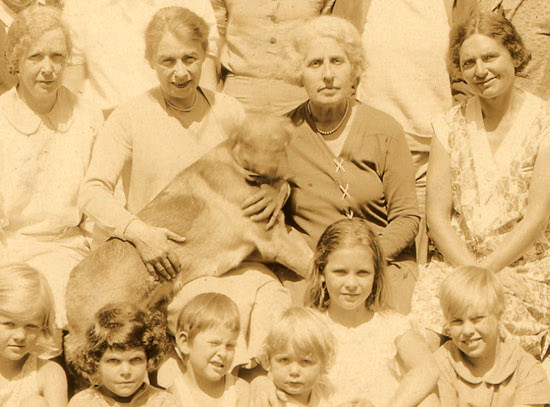
Pictured in the center of the back row: Ruth Doing (holding her dog) and Gail Gardiner. Front row, second from the right: Georgette (Andrea King), approximately age 10, with her arm around her sister Anne, age 3. Circa 1929.
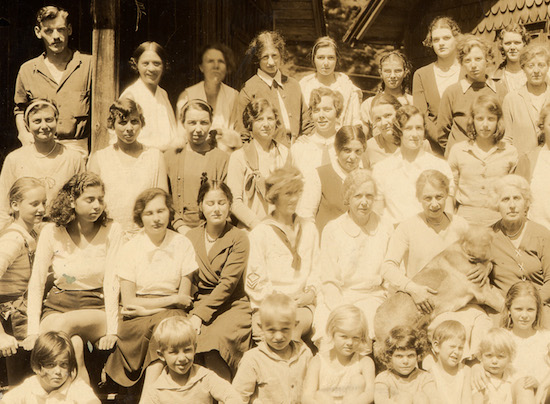
Andrea King’s mother Belle McKee, pictured in the back row, next to the post. Andrea and her sister Anne are in the front row together on the right. Circa 1929.
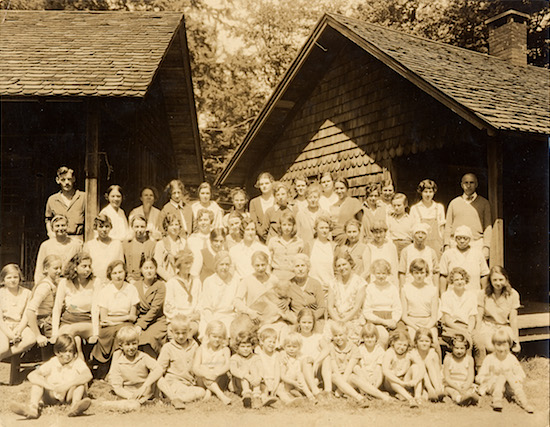
The Gardiner-Doing Camp in the Adirondacks. Upper St. Regis Lake, NY. Circa 1929.
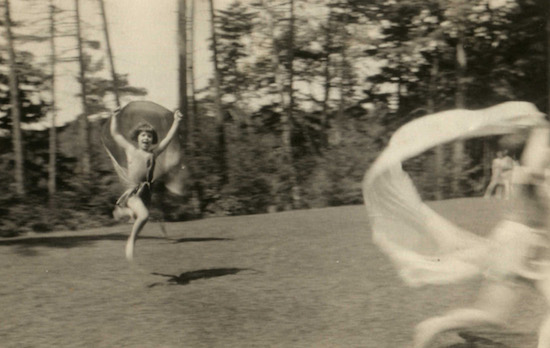
Andrea King, approximately age 7, at the Gardiner-Doing Camp in the Adirondacks. Upper St. Regis Lake, NY. Circa 1926.
Decades later, when Gail and Ruth began to sell off sections of their serene waterfront campgrounds, Belle bought her own special part of it, right on Chickadee Creek. Belle’s private camp became her favorite spot in all the world. She held onto it until she was 91 years old.
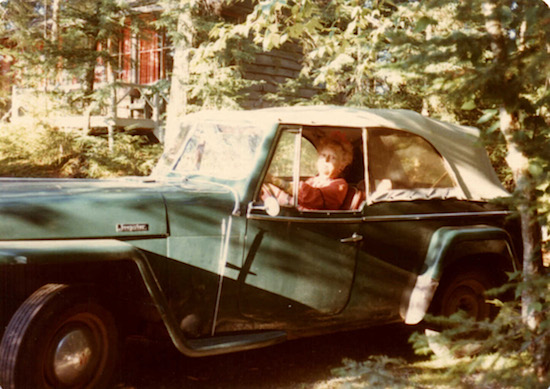
Belle McKee sits proudly behind the wheel of her jeep at her camp in the Adirondacks, part of the original Gardiner-Doing Camp. Late 1970s.
The Gardiner-Doing Camp as it appears today, now known and operated as Camp Regis-AppleJack:
Read more about the history of the Gardiner-Doing Camp, its controversial yet brilliant proprietors, and Belle’s many summers spent in the Adirondack Mountains of Upper St. Regis Lake in “More Than Tongue Can Tell,” available on Amazon.com in paperback and Kindle formats.

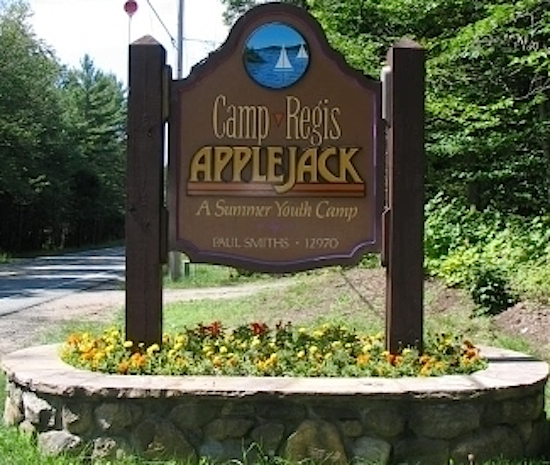
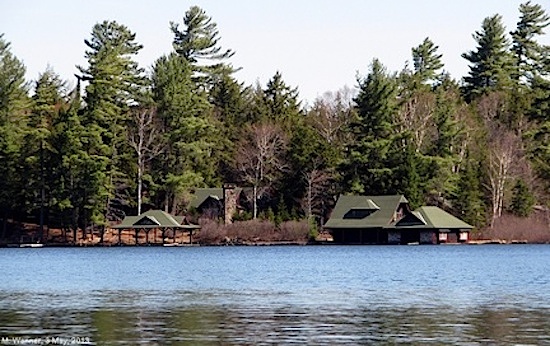
hello,
I believe we spoke some years ago, as you might have been working on this book. I might have met you at City and Country School? We may have spoke about not only the Rhythms work, but also about “camps” as my grandfather ran a camp in Kinderhook, NY near Chatham froom 1920s to 1960. I am collecting my mother’s and Sylvia Miller’s archives on Rhythms for a book. I have been a Rhythms teacher for 35 years and a dancer/performer. I wonder whether we could speak.
All the best,
Kate t. Morgan
Dear Kate,
Thanks so much for writing. I’m thrilled to hear from you, although I must confess, I don’t recall speaking with you (or anyone) previously about the camps or about Rhythms. I did hear from Sylvia Miller via her daughter, who contacted me through Andrea’s website, but that would have been over a decade ago, and I put her in touch with Andrea’s own daughter Deb Callahan. I would be happy to speak with you about it and/or put you in touch with Deb as well. I have removed your phone number from your published post in the interest of keeping the “spammers” away from you, but I will contact you directly and see what our best next step is. Your book sounds wonderful, and I’m so glad you’re working on it!
Take good care and thanks again,
Paul
I’ve been researching the woodworker Wharton Esherick who visited the camp, at the suggestion of the writer Sherwood Anderson, in 1920. At that time, the camp was on Upper Lake Chateaugay. If you’re interested in seeing some pictures of it at that time, the book “Wharton Esherick and the Birth of the American Modern” has a number of them. Esherick also did woodcuts of Gail Gardner’s house (the spelling is Gardner I believe), and several prints of dancers that were used on promotional material in the 1920s. Additionally, Esherick made furniture for the camp and a large sculpture which is on display at the Wharton Esherick Museum in Paoli PA. Esherick designed a large trestle table that has carvings that were made by people there who made designs based on what they envisioned various pieces of music “looked like”. That table, made in 1924, is now at the Threefold Educational Center in New Jersey. The center is part of the original Threefold Commonwealth Group, the first US outpost of Rudolph Steiners Anthroposophy (it began in NYC but this was where they grew their produce). It’s a great artifact from that time in Lake Chateaugay. It is a twelve foot long table most likely used in the dining hall. There are two smaller tables that Esherick made that are at the Wharton Esherick Museum. I’m not sure of the date that the camp moved to Upper St. Regis.
This is so great to see. Do you have any more photos of what camp looked like (building interiors or exteriors)?
Here is a photo circa 1926. If the caption is correct, the woman seated with the dog is Ruth Doing, then Olga Mendoza, and then Gail Gardner.
https://whartonesherickmuseum.wordpress.com/2017/06/26/early-rhythms-wharton-esherick-and-the-gardner-doing-dance-camp/mendoza-doing-and-gardner/
This is wonderful, Mark, and thanks so much for sharing! Andrea and Belle always spelled Gail’s last name as “Gardner,” but I found so many other websites misspelling it as “Gardiner.” I caved to that misinformation, something I no longer will do. I would rather post about what they recall and not take “expert” opinions when they weren’t there and don’t know what they’re talking about (despite reptutation). “Gardner” it is! And you should see how many variants there are on the web for “Doing.” I’m thrilled to see this photo of them together. Belle and Andrea adored these ladies. Free spirits, free thinkers, and generous, fascinating people.